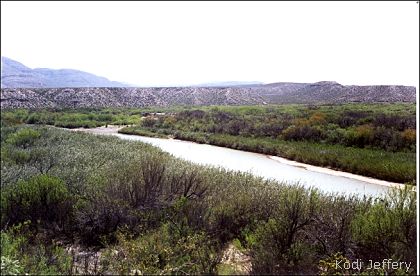

In the early 1830s, England's Charles Lyell published his two-volume work, the "Principles of Geology", with great impact upon scientists of the time. A major contribution was the overturn of catastrophism as the principal explanation for geological features in favor of the earlier, but never widely accepted, philosophy of uniformitarianism. Thus, instead of a series of catastrophes forming mountains and river valleys and other geological structures, he postulated they were formed by the same processes going on today. This popularization of uniformitarianism gave the world of science Deep Time. Instead of a few thousand years, millions of years or more were necessary to construct the landscape using current processes.
Once we accept this, and numerous lines of evidence now show it's
true in a broad sense, we can look at the landscape with new eyes. For example, rather
than some cataclysm forming the Rio Grande Valley in one fell swoop, we realize that
the valley rim marks the elevation from which the valley started, a valley excavated by
the slow washing downstream of sand, silt, and gravel.

Contributor: Arthur H. Harris, Laboratory for Environmental Biology, Centennial Museum, University of Texas at El Paso.
Desert Diary is a joint production of the Centennial Museum and KTEP National Public Radio at the University of Texas at El Paso.

The Rio Grande in the Big Bend region. The rim of the valley marks the former elevation of the valley floor. Photograph by Kodi Jeffery.
Lyell, C. 1830 - 1833. Principles of Geology. 3 vols. Reprinted,
University of Chicago Press, 1990. ![]()